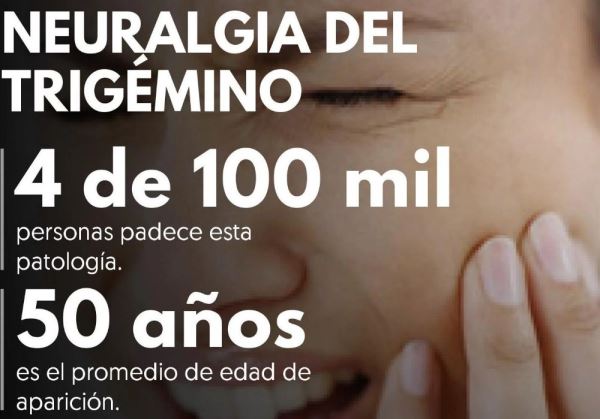Home / Blog
Our Blog
Trigeminal neuralgia is one of the worst pains that can suffer
Trigeminal neuralgia is a chronic disease that affects 4 out of 100 thousand people.
Trigeminal neuralgia or painful tic is considered one of the worst pains that a person can suffer, since in addition to being very intense is chronic.
A neuralgia is a pain in the path of a nerve, in this case the trigeminal nerve, which is responsible for giving sensitivity to one half of the face.
The incidence of this pathology is around 4 per 100,000 inhabitants, and the average age of onset is 50 years, however it can occur in quite younger patients. It is a pain that characteristically affects half of the face, severe, stabbing, electrical, disturbing.
At first it can be easy to confuse with a toothache, so it is common for patients to reach the neurologist or neurosurgeon having already extracted some of them. It is usually triggered by skin stimuli such as touching the face, chewing, rubbing the sheets, brushing teeth or even a thin breeze of air.
The cause may be associated with a contact between an artery or vein with the nucleus of the trigeminal nerve. This contact causes the nerve to malfunction.
Other forms of trigeminal neuralgia are secondary to different causes such as multiple sclerosis or certain tumors, even neuralgia secondary to some types of dental procedures are not uncommon. In any case, this pathology in itself is not indicative of studying relatives.
Although it is a chronic pain, it usually presents changes in frequency, intensity and duration throughout life. At first it occurs sporadically, with time it becomes more intense and more frequent, even for periods of improvement.
Some patients refer remissions of pain up to 4 or 5 years, but then the ailment returns in most cases. Even during the periods without suffering the fear persists that this reappears, this leads to people closing themselves trying to avoid these "triggers" of pain, thus limiting daily activities, work and family.
This condition goes through the person in all its planes, his life as a couple, his family, work, everything. It is not uncommon for patients to report problems in any or all of these areas. And although it is not a fatal pathology per se, cases have been described in which some patients opted for suicide. For these reasons, the incorporation of mental health agents (psychologists and psychiatrists) into the treatment team is very important.
In spite of how serious this condition can be, it is important to convey that there are numerous forms of treatment.
The vast majority of cases resolve totally or at least control the condition with specific medications indicated by a specialist. It should be noted that common analgesics do not change the course of this type of pain. And when all the drug treatment lines have not been effective, surgical alternatives are available, such as minimally invasive procedures or open surgery, each with pros and cons.
It is important to leave a hopeful message for patients and relatives, trigeminal neuralgia has a solution in a large percentage of cases.

